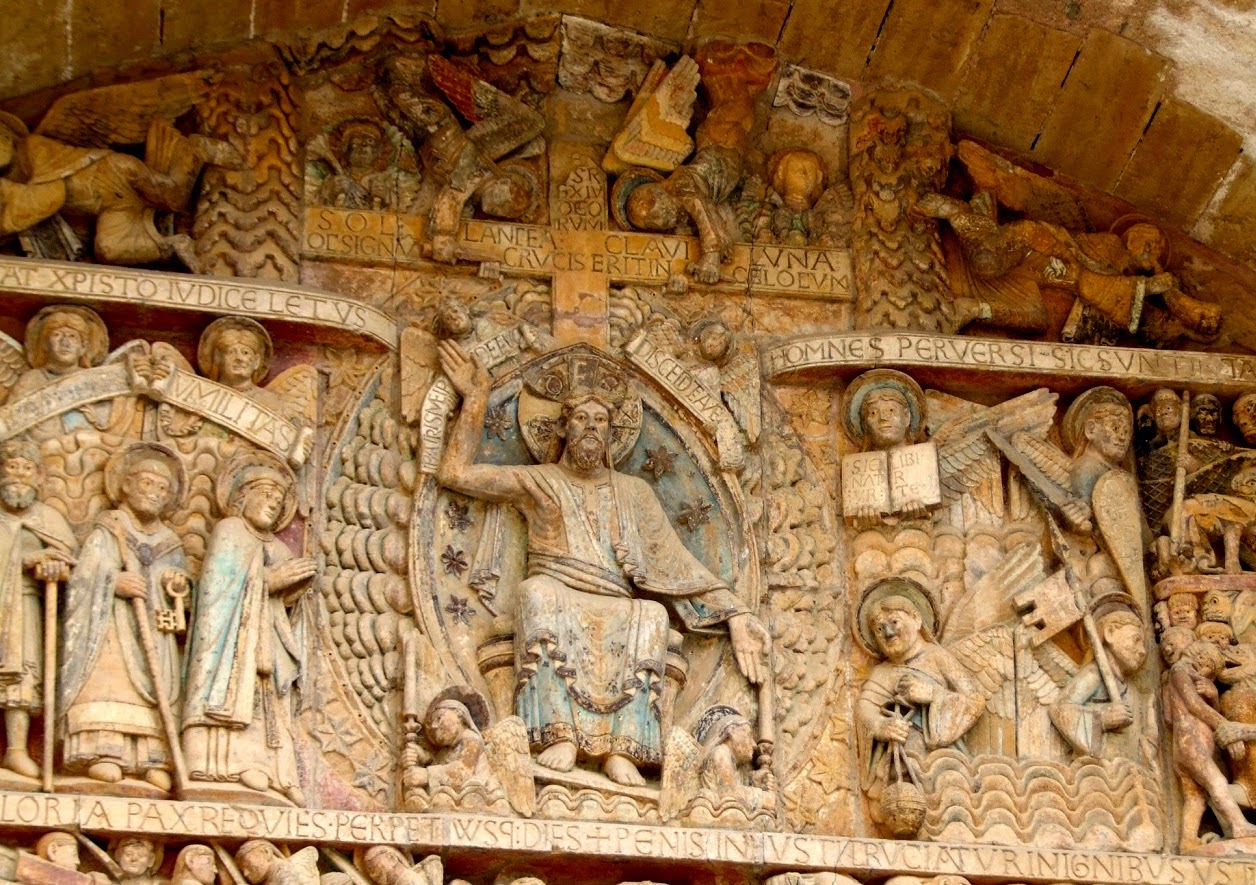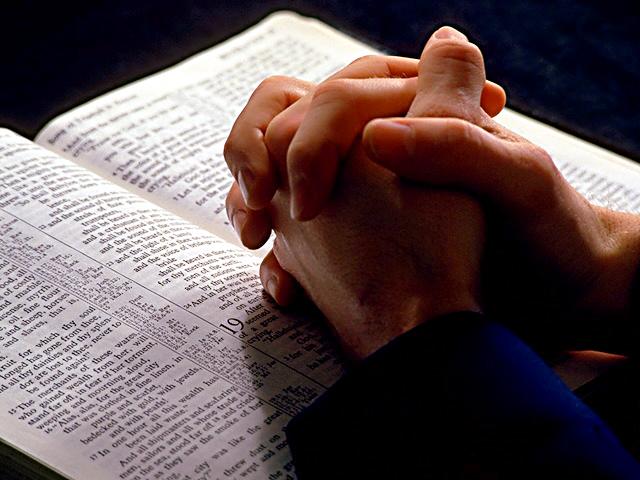Christian Art: Characteristics, types, and much more
The Christian artistic workforce was born many years ago and as the centuries progressed, Christian painting received a new evolution and creative developments, be surprised with everything you are going to know in this article about Christian Art, you will know everything about the paintings , sculptures, architecture and much more!
Characteristics of Christian Art
Preparing for the Renaissance and the resulting social developments, Christian craftsmanship has left a heritage with probably the most essential imagery in Western and Eastern societies.
Christian art depends for the most part on the production of images and statues whose central theme is religious, such as biblical stories, paintings, Catholic images, murals and stained glass windows have very explicit and extraordinary qualities, the accentuations of facial expressions and skin tone, for the painting this is also taken into account in the case that it is a painting of a nude.
There is respect for the representation of a color in a certain object, such as in all paintings and statues, the cloak of the Virgin is represented with blue and the robe of Christ is red, these are very specific details that were repeated in works of art and again.
It can also be seen that in all religious sculptures they simulate them as if they are making a meticulous movement of the hand, be it pleading, offering, pointing or touching, it is always very common to see it in religious art. Do you know who were Shepherds in the Bible, before following Jesus?
The Christian pictorial figures are represented being totally level on a canvas, wood or mural, in them the flat vision of art prevails directly where the illustration characterizes the forms and inside it incorporates the shading that is used to present the ideological meaning of the image .
In religious sanctuaries you can see a mixture of a wide range of representations and religious figures through art, this is diffused in all places of the sanctuary highlighting the raised area or altar, the windows are decorated with beautiful stained glass and can also be find sculptures in plaster or wood.
art and christianity
Through the association of crafts and Christianity, the leaders of the congregation seek to transmit the gospel through different possible forms, including engineering, architecture and plastic expressions, building sanctuaries in which images and figures are placed with the aim of that individuals who come to them to congregate and pray to the Lord God and achieve instructively through Christian art and become familiar with all Catholic Christian identities.
One of the most used assets is music, through which a particular melodic tone tries to convey various religious sentiments based on the type of religious service that is going to be performed or the message that is wanted to be transmitted to the faithful, either of agony , euphoria, deep respect, reverence, greatness or among others.
During the 7th and 8th centuries, Christians did not like heavenly images and saints, this was due to the impact of Judaism and Islam, however, Catholicism affirmed another meaning of the puzzle of the incarnation of Christ, God made the man, is the unrivaled, image, and guide to a culture in which equally sensitive structures can be made available in incredible quality. (See article: The power of Prayer )
The congregation has used various images and statues to convey their lessons of trust and Christian ethics, some of them are:
Bestiaries
The bestiaries are images inspired by fables, that through images of creatures or plants, for example, wind, sheep, lions, situations that were identified as good or evil depending on which image was represented, such as Christ, were represented. represented through a sheep or a lamb, this was a representation of good, animals such as a lion, bull or hawk together represented evil as well as cunning and envy was represented by the image of a snake.
early christian images
This type of art was often a representation of agnostic or pagan images, that is, of another religion very different from Christianity, however, these were of incredible recognition among Christians, art such as the educator, the Good Shepherd, the pontoon of the Church , among others.
They ended up being known with the primitive church and audited the name of Christ or Crismón through a fish, spikes or portions of bread, thus creating a cult symbolism already at another level that was art.
Marian symbols
They are related to images that represent Mary the mother of Jesus, which obtained a successful disclosure, in the Christian work of art the Virgin Mary is given an extraordinary place, symbolizing the divine motherhood appears with a baby sitting on her legs, this image represents his perfect assumption.
Representations of celestial nature
Often this is shaped in different ways, they can only represent the Father, the Son and the Holy Spirit or with a white dove the celestial divinity is also represented.
old testament images
The texts and stories of this were taken and in a very creative way they recreated what was in the texts, such as the sin committed by Adam, Eve and the serpent, this is one of the bad actions of the Bible that has been recognized the most. all over the world and this is largely due to art; as well as others, Jonah and the whale are the image of the resurrection; Isaac’s penance and many more.
new testament covenant
Texts from the life of Jesus Christ were used and captured in art through images that have really gone around the world, showing the youth of Mary, the evangelization of Jesus Christ and scenes of the passion, death and resurrection.
Types
Within Christian workmanship we can discover several types of expressions including, for example, paleo-Christian crafts related to around 70 AD, medieval crafts, pre-Romanesque crafts, Romanesque crafts, Cistercian crafts , gothic crafts.
Also, the crafts of the Modern age, the Renaissance crafts, baroque workmanship, contemporary crafts, neoclassicism and historicism crafts, Muslim crafts and Byzantine crafts. (See Article: The power of early morning prayer )
Paint
Christian painting had incredible growth and development during the Roman Empire, although due to its theme and attributes it tends to be considered as the beginning of medieval painting and was having new advances that offered to ascend to other aesthetic developments, for example, the Renaissance and others. social developments, of the most important works of art that have remained and still remain, I can name:
The Sistine Chapel was painted on the ceiling by Michelangelo sometime in the range of 1508 and 1512 AD. The Last Supper was created by Leonardo Da Vinci, it is seen as one of his most ingenious and admired paintings, it was completed in 1498, where the Last Supper of Jesus with his devotees appears.
The Virgin and Child was painted by Raphael sometime in the range of 1502 and 1504 AD, it has been exhibited since 1871, in Russia at the Hermitage Museum in Saint Petersburg. (See article: psalm 91 of the bible a night prayer )
The torturous murder of Christ remains one of the best known images, painted consistently by a few specialists, each having given their own understanding, Salvador Dalí, considered a surrealist craftsman who painted Gauguin’s Yellow Christ as an emblematic work, significant and exceptionally surprising.
Architecture
At present in the whole world and especially in the European continent we can admire different beautiful and incredible architectures which were the object of much careful investigation, this is because it is difficult to imagine how these magnificent structures were built in a time where it was not counted. with the necessary machinery for its realization.
It developed between the end of the third century and until the sixth century, it had its origin in Syria and Egypt, it spread rapidly to the West, this manifestation originated from the need to build buildings for the Christian religion.
It was in Rome, where the center of Christianity was designated, where the first demonstrations of architectural constructions were made, such as cemeteries or catacombs, which had to be hidden due to the persecution that was the object of the Christian religion, many of them were excavated in the gardens of the houses of Christians like those of Domitilla and Priscilla, in Rome.
With the passage of time and due to the increase in population, these catacombs were insufficient, so new ones had to be built and they were already outside the city, giving rise to public shelters, where successive floors were excavated in stone, which are what we know today as catacombs, this was so because religious worship assemblies had to be held in private homes, adapting some of their rooms for that purpose.
Sculpture
The Christian sculptural model had a solid impact on the Roman figure, which was therefore influenced by ancient Greece and ended up being known throughout the world, it was a form of craftsmanship that symbolized religious articles through various structures and materials, for example, wood, clay, stone, plaster or bronze.
The inheritance of the Christian model was exemplified in the extraordinary basilicas and houses of prayer, inside whose interior, significant reliefs were engraved on their dividers, marble boards in which the foundations were deeply cut with the aim that every surface had meaning for everyone. the Christians, where the walls and surfaces with a relief speak of scenes from Christianity.
From the Romans and the Greeks we can see today perfect sculptures of their human body, they did it depending on a geometric type called aurea, in this sense they discovered how to capture the magnificence of Christ, the holy people, the witnesses and the Virgin Mary, these same sculptures are used today in special Christian events.
In Catholic sanctuaries we can discover an extraordinary variety of extraordinary figures, either in the main elevated area or in the various houses of prayer or in the parallel spaces, for example, the textual or baptismal podium.
The windows are impeccably built, beautiful handmade stained glass windows of extraordinary excellence stand out, and on the roofs you can see the ecclesiastical figures that are trademarks of these sanctuaries.
Among the most significant delegates of the sculptor model of Christianity we can refer to Michelangelo Buonarroti, Leonardo da Vinci, Donatello and Niccolò dell’Arca, their magnificent works are very valuable and extraordinary. (See Article: Psalm 91 a prayer for protection and mental and physical healing )
Paleochristian and Byzantine
His birth was situated in Egypt and Syria, in the Hellenistic East. This style of craftsmanship created from the presence of Christianity, during the first five centuries of our period, during the Roman attack until the intrusion of barbarian groups, however, it has its continuation regardless of the fall of the domain and is known as Byzantine workmanship name.
In the West, definitely in Rome is the place where the main aesthetic indications of the Paleo-Christian occur, obtaining the extraordinary impact of Roman craftsmanship both in allegorical expressions and in engineering.
Within paleo-Christian workmanship, the Basilica stands out, its structure was composed of the vestibule, the chamber, a spring, the apse, the shelter, the altar area, the set and the steps.
Within the Christian sanctuaries there was only a special staggered area for God since the ceremonies and parades took place outside and the sepulchres, which were underground cemeteries, were made up of vestibules, exhibitions, specialties, tombs, baptismal fonts and basilicas.
The composition was through paintings, mosaics and miniatures with Christian themes as images, the structures of the congregation were adorned with mosaics, in some parts of the asphalt they were placed as carpets, this custom was later eliminated so as not to have to step on the images.
In the Byzantine kingdom, the naturalism that had recently been established by Hellenic workmanship was supplanted by an increasingly conceptual taste, thereby showing that its primary aim was to convey religious meaning rather than to speak precisely to individuals.
Indo-Christian
Indo-Christian handicrafts are crafts made by the hand of the indigenous people who were guided by monks, through this association, several small sanctuaries and more than 300 religious communities were worked, in which the local indigenous chief was responsible for different processes. , for example, cutting and moving stone, water, wood and block making and these same workers were also responsible for enriching the exteriors of Franciscan Augustinian and Dominican holy places in Spain. (See also: Baby Protection Prayer )
Medieval
Medieval labor is involved in the period between the 10th century and the 15th century, for about a thousand years in Europe, North Africa, and the Middle East.
Medieval craftsmanship was displayed in various structures through various imaginative specialty and class disciplines including goldsmithing, molding, engineering, religious text writing such as calligraphy, panel painting, mosaic se stand out as the creation of medieval garments.
Medieval crafts as indicated by history students are characterized by periods and developments, for example Pre-Romanesque, Romanesque, Early Christian, Gothic crafts, Islamic crafts, with common impacts, and Byzantine crafts.
There are also other separate similar styles such as Andalusian handicrafts, Asturian handicrafts, Visigothic handicrafts, Carolingian handicrafts or Viking handicrafts, Anglo-Saxon handicrafts such as especially syncretic styles, Mudejar handicrafts, Hiberno-Saxon handicrafts and Arab-Norman handicrafts. . (See also: Job Protection Prayer )
in the renaissance
In the fifteenth century, Italian scholars began a yearning and wise scholarship to supplant medieval theocentrism with a humanistic anthropocentrism.
The masterful representations had as reference writings, structures and the figures of the Greco-Roman culture, the study and mimesis of ancient style and the personification of nature through artistic painting was something incredible, its focal points that included were the religious and they were incorporated into the expansion of pagan themes that were also widely used at the time.
In the last time of the Renaissance through the masterful style called mannerism, the images of the personifications are bent and distorted to achieve various impacts on the movement effect, in the Spanish low Renaissance, the predominant masterful style is designated as “herrerian” or “ escurialense”.
Contemporary
Contemporary crafts is the name by which it is generally recognized, among all aesthetic expressions that were made during the 20th century, we can discover that contemporary crafts include fauvism, expressionism, cubism, futurism or dynamic cubism. , non-allegorical or theoretical crafts, neoplasticism, developed Dada, surrealists, second avant-garde, applied crafts and unique expressionism.
The church has always used the different cultural and artistic expressions to convey the message that Jesus Christ entrusted to it, many painters, poets, writers, musicians and artisans have been inspired by biblical narratives, both from the Old and New Testaments.
The traditional musical Christian art class is still used to improve the festivals that the church performs, since ancient times music has been constantly used to praise God, the Virgin Mary and the saints, this has been transmitted from the parents to their young children and today this type of art is a fundamental part when performing any type of Christian worship.
Since the Council of Vatican II, around the 20th century, there is a resurgence of religious music which was predominant throughout Europe, poetry and verses of the religious theme are also present in our days, the writer of this type of art is characterized by sensing something supernatural, he reflects on it and recognizes the magnificence of God when he encompasses it.
Contemporary plastic expressions also stand out a lot in Christian art, we can find a wide variety of religious representations of various styles, the Church has constantly used painting, sculpture, engineering, plastic art and all art in general to create more confidence in the parishioners and become associated with these important biblical characters through Christian art.
The Church continues to need believing artists to praise God through art, take advantage of aesthetic enjoyment to raise the spirit to the Lord and transmit the message of the Gospel with a modern style, the Church has always needed temples to gather the faithful and celebrate the sacraments , this need persists and architects have designed temples that are, at the same time, places of prayer and authentic works of art.
These temples have different objectives such as, for example, to externalize the faith of a people, to respond to specific needs and the believing poet shows, through art, the presence of God in nature, the realities of life, religious celebrations and the sentence.
Also in modern Christian art we can see how it communicates spirituality understood and how it is the path it follows to identify with Christ, for example, poets have a deep sense of God and his presence in the most intimate of their being and present it by through poetry, sometimes heartbreakingly, others serenely and joyfully, as well as sometimes showing the search or thirst he feels for God in the emptiness or in the darkness of life.
There are also musical groups that use music as an instrument of evangelization through public performances, popularizing their songs among Catholic youth movements and parishes, and annually, with great attendance by young people, festivals of youth religious music in which young singers participate. and Catholic groups.
In current music as an expression of Christian art, the spiritual songs of African-American people are recovered and a musical movement is born, known as gospel, which tries to transmit the religious experience from a young music.
modern christian art
The current art is a development more oriented towards elegant than neat craftsmanship, conceived in Europe and spreading to the United States towards the end of the twenty-first century, due to the transformation in industry.
Currently it is characterized by having a consecutive advance that does not stop, this is due to the fact that it continually plays with new themes, materials, systems and procedures, craft exhibitions and the figure of the seller arise. The presentation of the artisans adjusts as the academic bourgeoisie replaces religious and political thought as an essential client.
Another idea of crafts is developed in which the most genuine reaches of Christian art and its capabilities are addressed, so the idea of crafts expands, and its main ability is not only to convey a religious and political message as a fundamental objective.
The plastic artisans gradually leave the impersonation of nature and non-literal representation, this is inspired by the presence of photography with the imaginative objective, it offers an approach to think about disfigurements, this does not happen due to the absence of strategies, but rather well for the elegant contemplation of art specialists, this offers to ascend to new aesthetic and avant-garde developments.
Baroque
This is one of the fundamental creative patterns of the advanced age between the fifteenth and eighteenth centuries and incorporates painting, model and engineering, its theme communicates all the religious clashes of the time, the rulers and chiefs of all Europe had an extraordinary enthusiasm for that the catholic church flourished and forced itself, in this way the illustrious leaders of France and Spain designated innumerable works of art such as plastic representations and figures to strengthen the achievement of their catholics.
In nations of Protestant origin, for example, Holland, extravagant labor did not have so much religious centrality, but rather commercial and was used to take into account the incredible desire of the merchants and the white-collar class. Within the florid workmanship we can discover four attributes that characterize it: authenticity, gloominess, lines and hours.
The sensation of development, tension and vitality is presented, there are solid differences of shadows and lights that present the scenographic impacts in some figures, representations and design works. An incredible different world is seen in the various scenes of sorrow and joy.
Without a doubt, Christian Baroque art through subtleties such as its independence, speed and power made it one of the most established Western craft styles.
Byzantine
Byzantine craftsmanship was created in the fifteenth century in the era of Constantinople, capital of the Eastern Roman Empire, it was the most significant imaginative focus of that time, with an aesthetic combination deeply established in the Hellenistic and Eastern universe that offers coherence to early Christian art.
It is divided into three phases: the golden age, the iconoclastic period and the second golden age. Among its qualities, it stands out that it is a craft firmly identified with religion, it is a synopsis of Hellenistic customs and is based on Persian themes.
The most significant structures are intended for Christian service, where religious canvases, models and mosaics are presented that prevail in a solid Christian impact through images that simulate the God of majesty, the glorification of Christ, the virgin and the apostles.
Muslim
Muslim handicrafts or Islamic handicrafts has its beginning in the Arab promontory in the year 650 after Christ, it is a handicraft that has been affected by different societies, it is very religious, just like the Jews, Muslim handicrafts depend on the prohibition of the human figure, which makes the design stand out from different expressions, the mosques and the royal residences of different structures protrude, the arches, for the backrests they use columns and segments that are enhanced with geometric figures.
The dark lines, the geometric details, the level and the light tones enhance the design and one of the most used themes is the epigraphy with themes of the Koran.
Romanesque
Romanesque craftsmanship ended up being known little by little in Spain, Italy, France and Germany in the period comprised within the eleventh, twelve and thirteenth centuries, it was a creative development, it has certain attributes that we can distinguish in figure, engineering and painting, since which is a particular language with lucidity and importance that is closely connected to aesthetics.
Romanesque craftsmanship was the main Christian and amazing European style that figured out how to aggregate existing distinctive styles, these were used towards the beginning of the Middle Ages in what is known today as Roman, Pre-Romanesque, Arabic, Byzantine and Germanic art.
The Romanesque workforce basically arises due to a progression of political and social changes that take place in Europe, for example, the landing of Christianity in Europe, the beginning of the Spanish reconquest, the emergence and spread of the Romance dialects, the development and the rise of development throughout the urban sprawl, travel, and the entry of the Capetian imperial administration into the position of French authority.
In the Romanesque workmanship, scenes of daily life identified with religious themes were shown for which they depended on three key laws which are: art must be experienced and lived, places of worship have high vaults to splendidly play their deep capacity and material must have meaning and excellence in an imaginative way.
Various materials are used, for example, permeable stone, bone, mud, volcanic material and basalt, which are considered poor materials and also use marble, particularly in models and structures and in landmarks stone and wood, it is prominent and in its progressive development added concrete.
As for the structures, Romanesque craftsmanship highlights that the pieces regularly show everyday situations in a usual, reasonable and schematic way and as for the tones, they are distinguished by being polychrome and use a large number of mixed tones that offer depth to works of art.
The Romanesque model is firmly connected to the design, for the most part dedicated to biblical stories, made of stone, wood and different materials, we can also see scenes from the life of Christ, scenes of war or everyday life.
The most extraordinary models are the Greek portrait painters, in which the aim is to present imperfections rather than excellence, and the figures are made in huge pieces exemplifying various critical occasions.
His works of art demonstrate an extraordinary predominantly Byzantine impact, despite the Visigoths and Carolingians. Among the Romanesque masterpieces that we can present to give some examples are the Colosseum, the Pantheon of Agrippa, the Battle of Isso (mosaic), the Arch of Constantine and the Black Gate in Trier.
The main indication of the Romanesque work of art is the design that is recognized by its columns framed by kaleidoscopic centers that support vaults and roofs, half-circle curves, cylinder arches, beautiful friezes and the incorporation of models, all this to name a few.
These beautiful works of art are preserved and well cared for since they are masterpieces that with all the technology that exists today have hardly managed to match their beauty and details, in addition to this they have great historical value.

Hello! Let me enthusiastically introduce myself as a dedicated blogger fueled by an intense passion for meticulously crafting insightful and well-researched blogs. My mission revolves around providing you, dear readers, with a veritable treasure trove of invaluable information.







